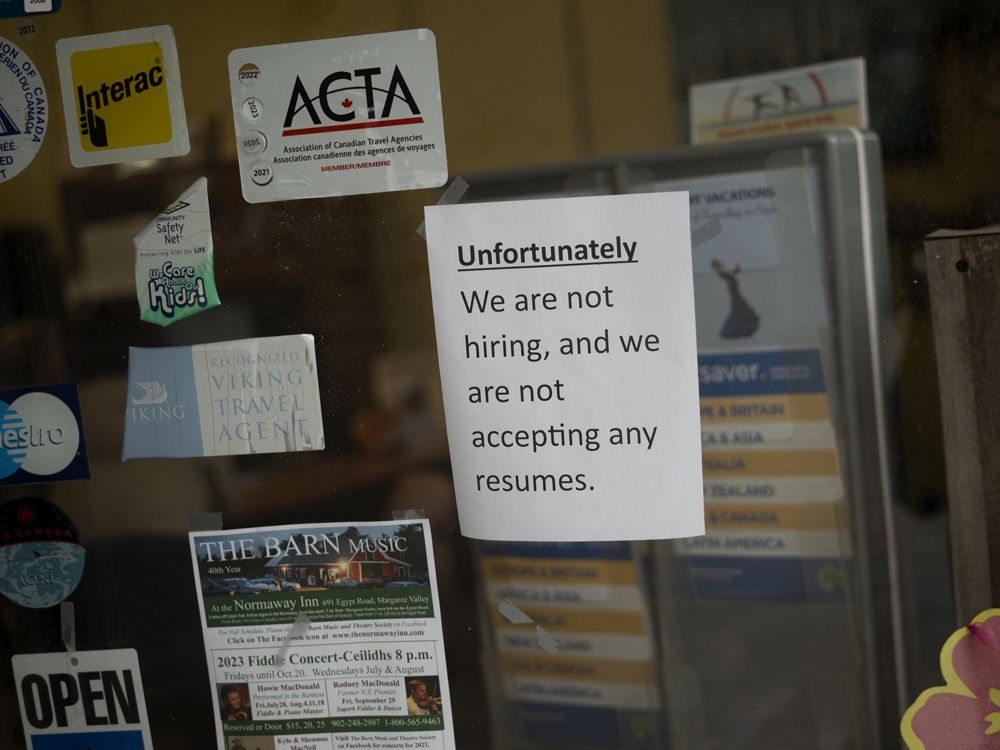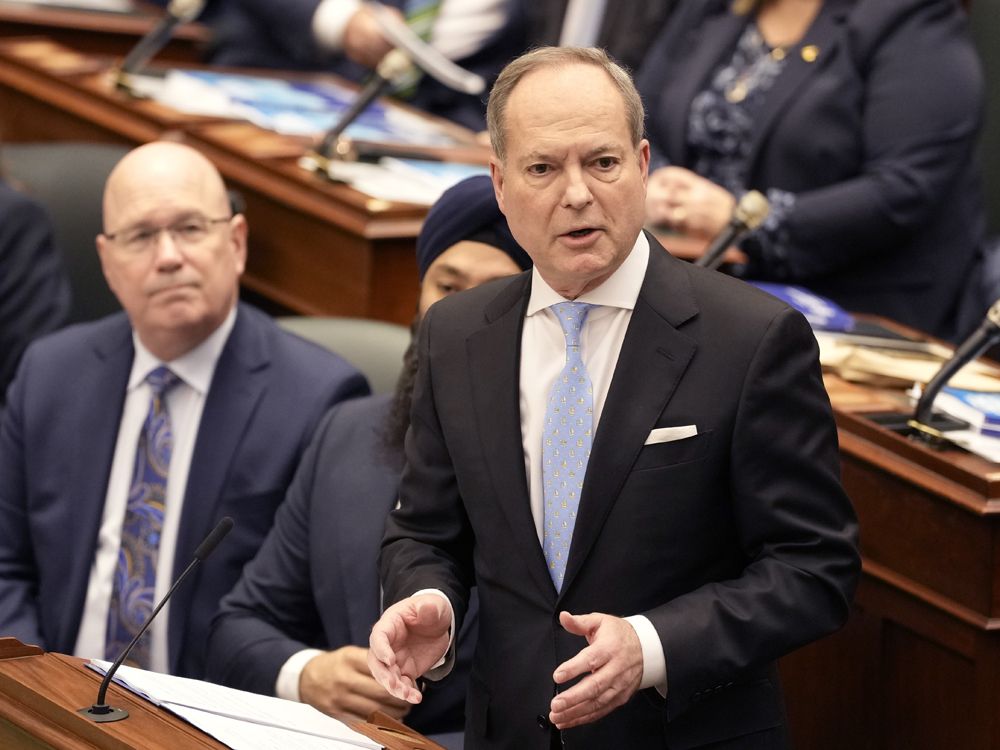Bend it like Christine Sinclair — Carolyn Wilkins on what Canada’s policy makers could learn from women’s soccer

FP Economy essay series: Canadian soccer gold didn’t ‘just happen,’ and sustainable economic growth won’t either without a plan

Article content
Inspiration may seem to be in short supply in troubled times, although it can be found if you know where to look. I’m still moved when I think of the Canadian women’s soccer team winning the gold medal at the Olympics. There was cheering in my house when that final goal went into the net.
Advertisement
Story continues below
This advertisement has not loaded yet, but your article continues below.
Article content
That moment didn’t just happen. It was an uphill climb for them to qualify for the Olympics for the first time in 1996. Reaching the peak was even harder. It took training, following a game plan, learning from mistakes, and playing with great focus and determination. The captain of that team, Christine Sinclair, has said that she didn’t even know there was a national women’s soccer team when she was growing up. Today, they are inspiring many younger people to aim high.
How can we apply this to the troubled times we are living through today? Some five million people have lost their lives to COVID-19, including over 29,000 Canadians. We’re learning about the scarring effects of the pandemic on physical and mental health. The economic toll has also been immense, with gross domestic product (GDP) still below its pre-pandemic level. Ongoing issues with supply chains and labour shortages aren’t helping.
Advertisement
Story continues below
This advertisement has not loaded yet, but your article continues below.
Article content
We’ll push through these headwinds eventually. When we do, we should think like the women’s soccer team; COVID-19 was a formidable foe along our path, not the opponent in the final match. Canada’s enduring challenges are an aging population, climate change, and getting shared benefit from technological progress. These challenges are surmountable, but we must play to win. It means pursuing the right kind of economic growth, fuelled by targeted investments.
Take aging. Nearly one out of five people in Canada are over the age of 65. Aging has increased the urgency of re-examining our personal and health-care strategies. It has profound implications for everything from “aging in place” programs, to the nature of the health-care services we offer, to the kind of health-care workforce we’ll need. Robust and sustainable growth is essential to finance the investment needed given health services already make up around 12 per cent of national income.
Advertisement
Story continues below
This advertisement has not loaded yet, but your article continues below.
Article content
Environmental risks represent the greatest intergenerational threat to our collective wellbeing
Today’s environmental risks represent the greatest intergenerational threat to our collective wellbeing. Addressing climate change is a multi-decade endeavour requiring massive financial resources, a clear plan and sustained efforts from everyone. COP26 is but one, albeit an important, step forward. We’ll need to build out Canada’s clean energy grid, retrofit buildings, and green agricultural practices. We’ll also need to reduce the carbon intensity of Canadian oil and gas production, given the magnitude of emissions and the fact that we’ll still need fossil fuels for some years to come.
Technology holds enormous promise to meet these challenges. To make good on this, it will take public and private investment. Innovation may happen at a faster pace these days, but the practicality of implementation still doesn’t happen magically. The move to 5G wireless technology, for instance, requires major investments in networks. It’ll also take investment in education and training, and modernization of competition policy and digital governance. That’s because innovation can yield impressive monopoly profits, and leave some people behind, just as steel and railroad companies did in the 19th century.
Advertisement
Story continues below
This advertisement has not loaded yet, but your article continues below.
Article content
Our track record on the growth front is underwhelming, and this has left us vulnerable. In the decade before COVID-19, Canadian GDP growth averaged about 2.25 per cent per year, near the top among G7 countries. However, GDP growth per person — a measure of prosperity — averaged only about one per cent. That’s near the bottom of that pack, not even worth a bronze medal. And almost all the gains in per capita GDP have gone to those in the top part of the income distribution.
Canada has been falling behind because of chronically weak productivity. We invest less in research and development and we’re slower to adopt technology than most of our peers, and we maintain impediments to trade within Canada. What does this weak performance mean for Canadian families? It means we are poorer — interprovincial trade barriers alone lower GDP per capita by four per cent of GDP, according to the IMF. It also means diminished capacity to help those in need, invest in Canada’s future, and keep public finances on a sustainable track.
Advertisement
Story continues below
This advertisement has not loaded yet, but your article continues below.
Article content
Let’s change this. Financial resources are critical, but so is developing an executable plan. I learned from years of working on international financial reform that building successful plans among diverse stakeholders requires leadership, and compromise. We’ll need to keep in mind what I think are the hard lessons of our times.
Market forces only work well when private costs and benefits are aligned with those of society. Take climate change. Individuals and businesses don’t pay the full cost of their contribution to greenhouse gases and pollution, so market forces aggravate the situation.
We’ve also learned that the most efficient solutions may not be the best. Modern supply chains may be efficient, but they’re vulnerable to disruptions. The materials needed for electric vehicles, for instance, depend on jurisdictions exposed to geopolitical risk and weak labour standards. Domestic capacity can be built in some areas. Efforts have begun to restore pharmaceutical capacity in Canada and to capitalize on our wealth of metals and minerals by investing in manufacturing capacity for high-performance batteries.
Advertisement
Story continues below
This advertisement has not loaded yet, but your article continues below.
Article content
When I started in public service in the 1980s, many thought that a rising tide would lift all boats. We now know that inequality and lack of opportunity torpedo progress. Economies that are more unequal have less-healthy communities, and often experience slower and less resilient growth. That’s why we must aim for inclusive economic growth.
The concept of economic growth can seem remote from very human desires like good health, meaningful work, affordable housing, clean water, and a healthy planet. Yet our well-being involves many goods and services — internet connections, teachers, and medical equipment. These require competitive businesses, a talented workforce, and considerable investment. Think of what went into the discovery and commercialization of insulin and canola, both Canadian inventions. Those came about because the public and private sectors worked together.
Advertisement
Story continues below
This advertisement has not loaded yet, but your article continues below.
Article content
Overcoming these challenges will be expensive so we’ll need to be smart about it. Better ways of doing business have given us a 20-fold increase in real income per capita in Canada since Confederation, so public spending should focus on initiatives that yield a return on investment. That reality means taking a long-term, strategic approach to budgeting.
The right kind of growth is an essential ingredient to our shared objectives.
To succeed, we must recognize the power of the public and the private sectors to work together. We must focus on long-term investments in areas like education, health, globally competitive businesses, our green power grid, and modern digital governance. These investments will equip us to build a strong, resilient, and inclusive economy that will serve us well as we seek to meet our climate objectives.
Advertisement
Story continues below
This advertisement has not loaded yet, but your article continues below.
Article content
Christine Sinclair said something that has stuck in my mind: “I think the thing that has sort of always separated me . . . is my ability to score goals.” With 188 goals in her career, she wasn’t kidding. Canada needs to score more goals if we want to win the Gold. I think we’re up for it. Like the women’s soccer team, it’ll take ambition, an executable plan with the right financial resources and — above all — determined effort, from the whole team.
Carolyn Wilkins is a member of the Bank of England’s financial stability committee and the board of directors of Intact Financial Corp. She served as senior deputy governor of the Bank of Canada from 2014 to 2020.
Advertisement
Story continues below
This advertisement has not loaded yet, but your article continues below.





